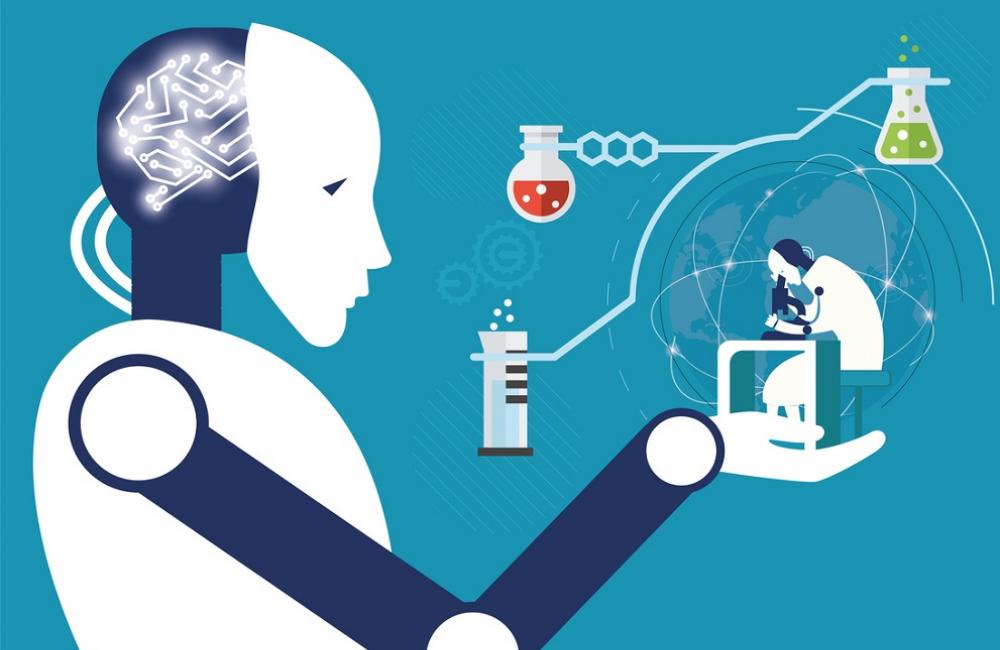Most people think that technologies like AI, drones, and robots are years away from really becoming usable. We’ve been seeing them in sci-fi movies and imaginative fiction for a while now, but for the most part these robotics still seem to have a futuristic feel to them. What many people don’t realize, though, is that organizations have been piloting them in specific use cases for years. The COVID-19 outbreak is a real-life use case for these emerging technologies—and an incredibly important one. AI and robotics can help fight disease, a capability that is now changing and will continue to impact the way we deal with health emergencies like this one.
The Technologies
Artificial Intelligence
With today’s technology we can track and forecast the spread of disease like never before. With medical personnel overwhelmed by the coronavirus, AI can more efficiently take on and help with some of the tasks necessary to tackle the crisis:
- Detection. Companies like Canada’s BlueDot make use of AI that detects outbreaks, quantifies risk of exposure, and calculates spread. BlueDot’s intelligence system warned of the COVID-19 threat several days before public warnings were issued by the Centers for Disease Control and Prevention or the World Health Organization.
- Diagnosis. Infervision, a Chinese artificial intelligence company, has been utilizing an AI coronavirus solution for reading CT scans to diagnose cases. The company’s CEO, Chen Kuan, says they’ve been working with Japan and Italy in addition to their own Chinese hospitals, and they look forward to aiding other countries as well. China’s tech giant Alibaba is also leading AI diagnoses, with lung segmentation computing and a deep-learning algorithm model that takes seconds to run—nearly 60 times faster than a diagnosis by a human doctor.
- Drug and vaccine development. Artificial intelligence systems such as Google DeepMind and Benevolent AI assist in medical research and understanding of viral protein structures, and can help predict and build drugs that may be of use in treatment. Supercomputers are also being used to calculate vaccine possibilities as quickly as possible.
- Document processing. AI is also useful in areas that are easier to overlook, like administration and claims processing. Not only does this lighten the load of human personnel, it can reduce unnecessary face-to-face interaction as well.
Drones
Under cautionary measures and quarantine, the transportation of medical supplies can be done more safely with unmanned aerial vehicles. For example, the Japanese company Terra Drone quickly began transporting medical samples and materials between the Xinchang County People’s Hospital and Xinchang County’s disease control center after the Wuhan quarantine began. This often allows for faster transport than by car, and it’s another case where machines can do the work that would be dangerous and unadvisable for humans.
Robots
You may or may not love your home assistant proto-bot Alexa or Hey Google, but one thing is clear: robots don’t catch coronaviruses like people do. And that makes them very valuable in locations where contagion is a danger. Blue Ocean Robotics has designed a mobile robot that uses UV technologies to disinfect hospitals and pharmacies. It breaks down the DNA structure of viruses and bacteria, leaving surfaces sanitized to reduce infection among essential workers. Robots can also do tasks such as food and medicine delivery to further reduce person-to-person contact and free up medical staff in heavily affected environments.
The Take Away
Much of futuristic imagination presents a somewhat frightening sense of the technological unknown, and many people take a kind of comfort in the thought that we haven’t arrived there just yet. But, on the contrary, we have arrived there. And it doesn’t have to be frightening. Technology can help us through this pandemic in so many ways—from everyday essentials like allowing us to work from home to front-line assistance for medical personnel. COVID-19 is changing how we interact with both technology and disease on a global scale, and it’s a perfect example of how AI and robotics can help fight disease in ways that bring relief to us biological humans. These new technologies do need to be employed responsibly, with consideration for ethics and privacy rights—but there’s no doubt that they can improve our safety and save lives.
If you’re interested in learning more about AI and how it works, see our step-by-step guide to build, train & deploy ML models with Custom Vision and an intern project beating a video game level with ML.

